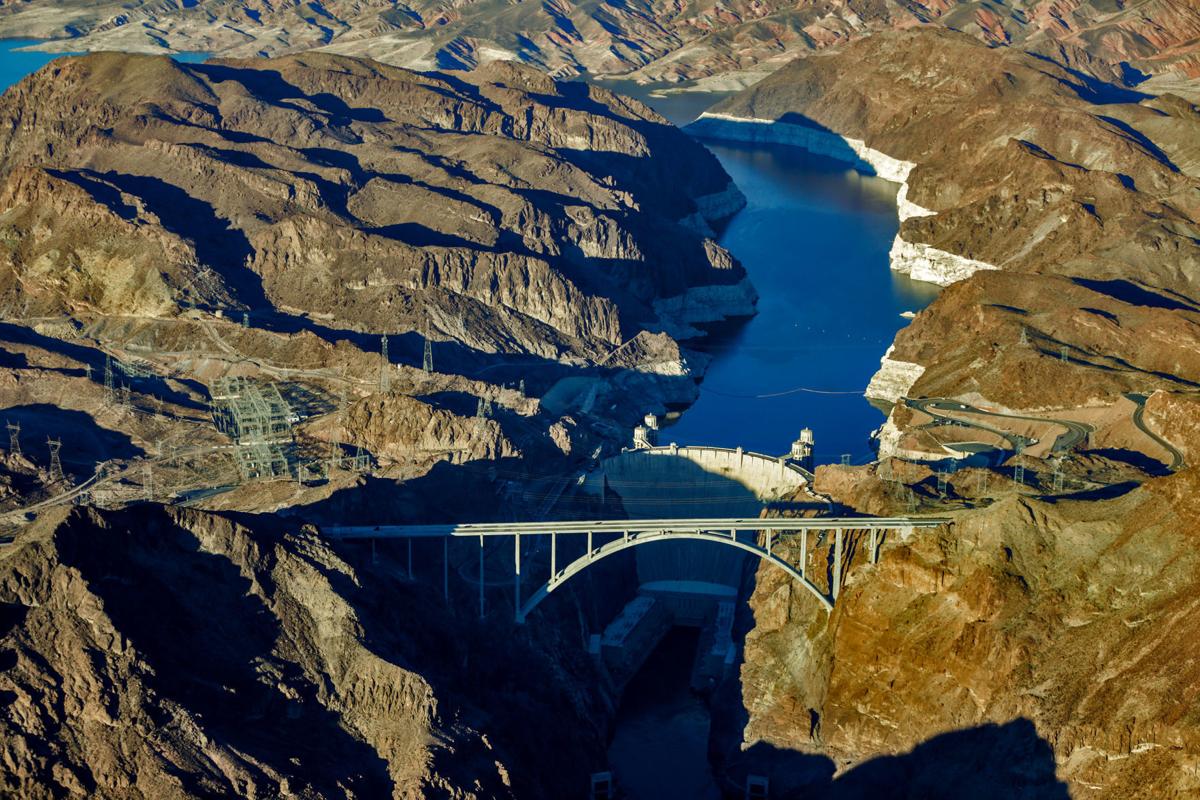Nearly six years after discussions started, a drought plan for the Colorado River is on the verge of becoming federal law.
Legislation for the drought contingency plan aimed at propping up Lakes Mead and Powell unanimously cleared the House and Senate Monday and Tuesday, respectively. The bill now heads to President Trump for his signature.
The plan calls on the Lower Colorado River Basin states of Arizona, California and Nevada to conserve up to 1.2 million acre-feet of the 7.5 million acre-feet to which they have a right between now and 2026. The cuts will kick in at small amounts almost immediately and will escalate when Lake Mead drops low enough.
Arizona, whose $4 billion Central Arizona Project will take the first cuts during a Colorado River shortage, would lose 192,000 acre-feet of CAP water at first. (One acre-foot is enough water to serve four Tucson households for a year.)
When Lake Mead drops below 1,075 feet, which could happen by 2021, the CAP would lose nearly one-third of its supply, or 500,000 acre-feet. When Mead hits 1,025 feet, the CAP would lose more than 700,000 acre-feet.
The plan is aimed at delaying the time when the two reservoirs will drop so low that it will be difficult or impossible to get water and electric power from them.
Rep. Raúl Grijalva, a Tucson Democrat whose bill is the one headed to the White House, praised its passage but warned in an interview that it’s only an interim step.
The seven Colorado River basin states must soon start work on revising guidelines for managing the river that were approved in 2007 and expire in 2026.
“The pressures are going to continue, from population growth, extractive industries, mining primarily, and agriculture,” Grijalva said.
With climate change expected to make this region more arid over time, “The availability of that resource of water is going to be challenged,” Grijalva said. “We have to understand that this is a point of relief right now, and an opportunity to do something more significant going down the road.”
He, Arizona Sens. Martha McSally, a Republican, and Kyrsten Sinema, a Democrat, hailed the bill’s passage as an example of how Congress should work, in bipartisan fashion. McSally noted that the bill was cosponsored by all 14 senators representing the river basin states. Eight are Democrats. Six are Republicans.
Discussions among the basin states’ water officials over a drought plan started in 2013. They at times seemed on the verge of collapsing.
But work toward final approval accelerated since Arizona’s Legislature, after acrimonious debate, approved this state’s participation in the plan on Jan. 31.
This was “a remarkable chapter in the long story of securing Arizona’s water supplies,” said Arizona Department of Water Resources Director Tom Buschatzke.
In congressional testimony last month, Buschatzke acknowledged the plan isn’t a permanent solution: “We recognize that more must be done by the states to prepare for a drier future.”





